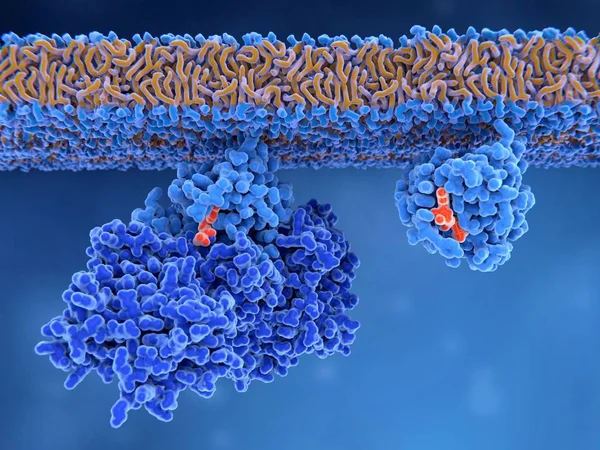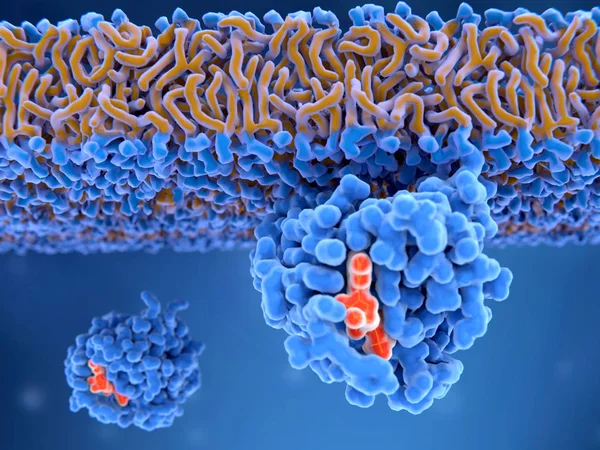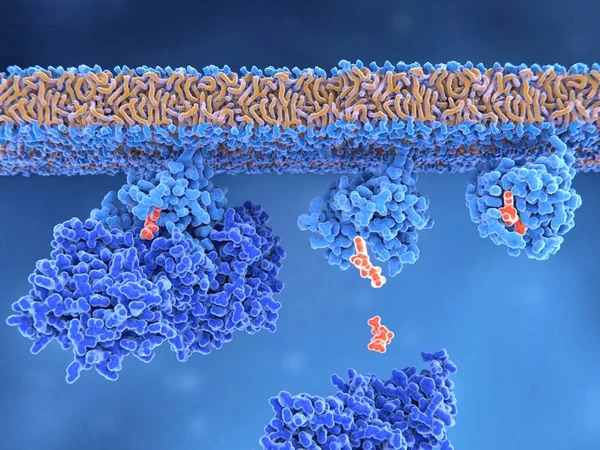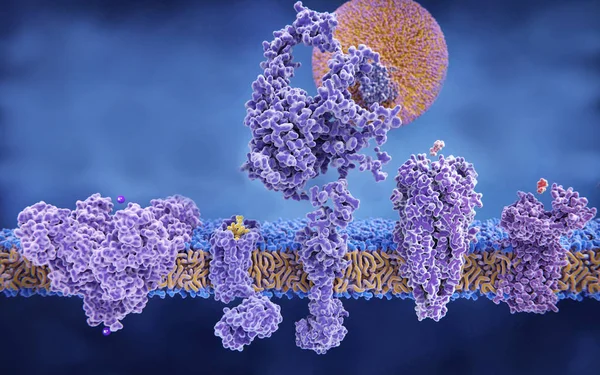Stock image Activation of a Ras protein Inactive Ras protein (left) is activated by a GEF protein opening the binding site allowing GDP to exit. Then GTP can bind to RAS turning it into the active form. 3d render. Illustration

Published: Mar.21, 2019 11:58:41
Author: animaxx3d
Views: 51
Downloads: 5
File type: image / jpg
File size: 3.68 MB
Orginal size: 8000 x 6000 px
Available sizes:
Level: bronze



